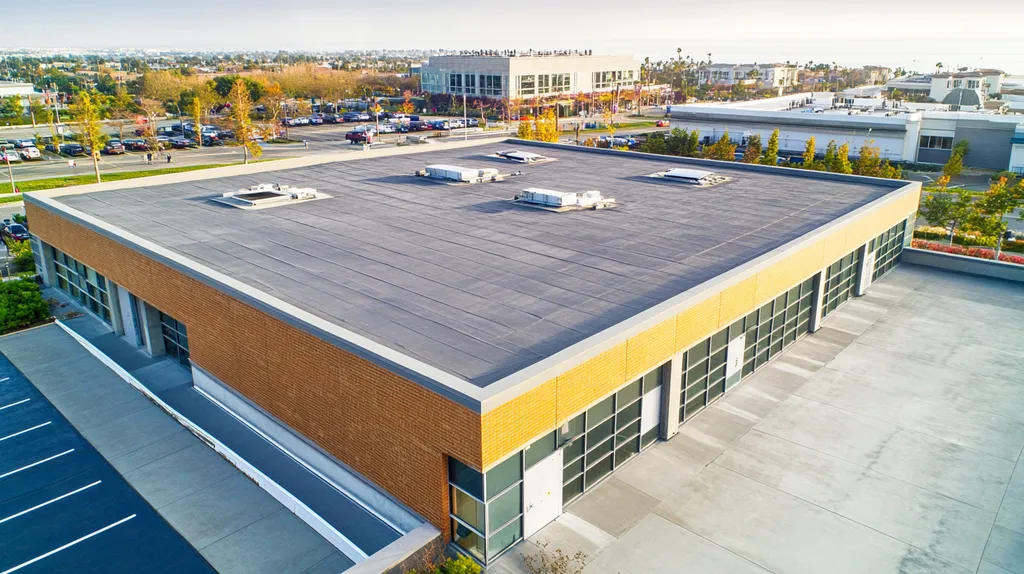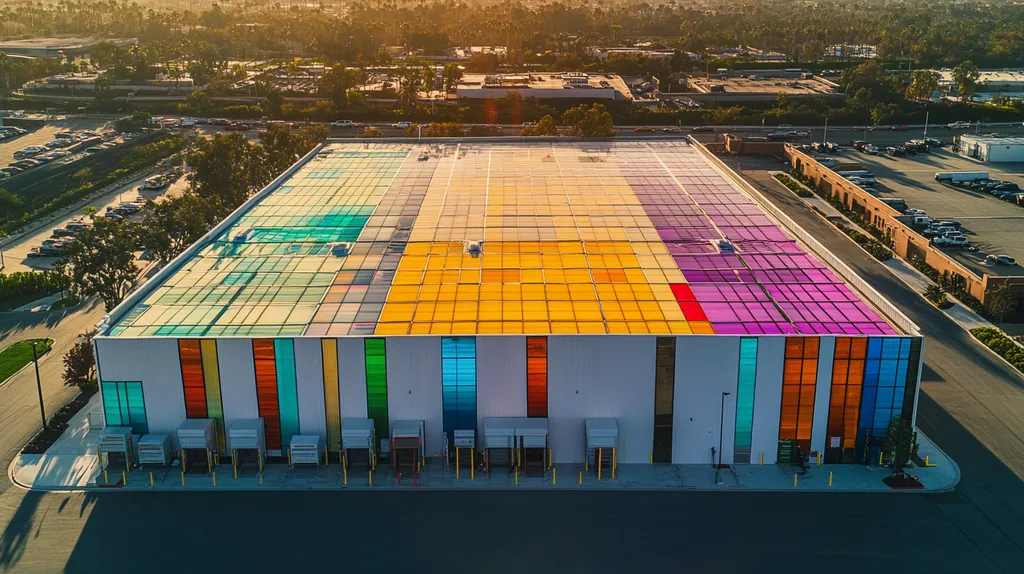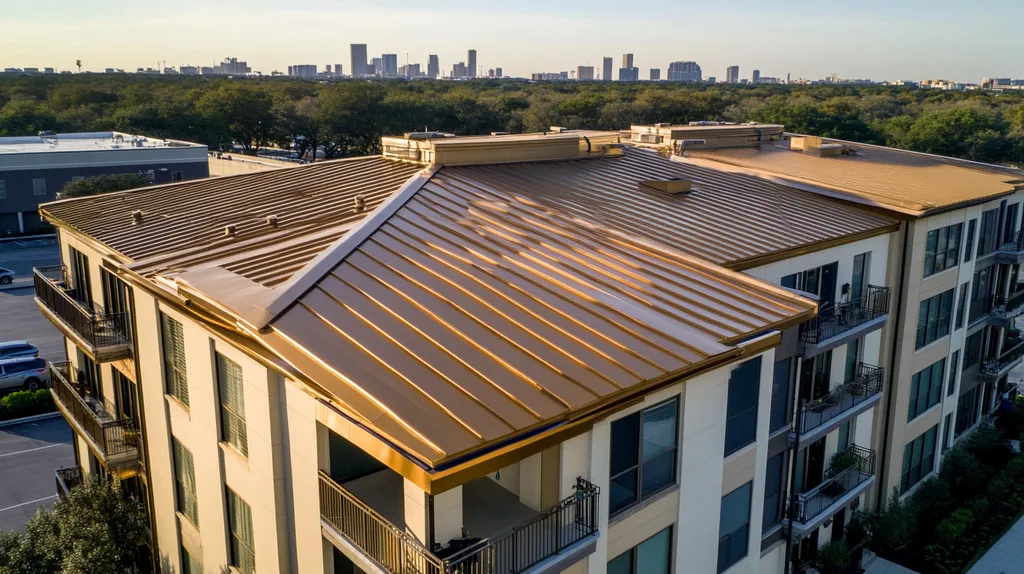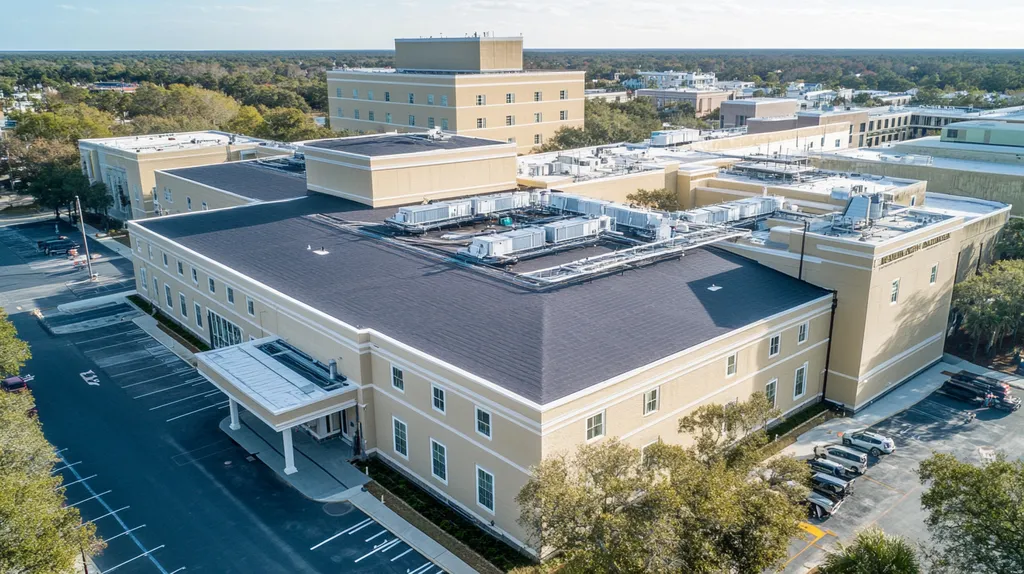Commercial roof coatings represent a $1.5 billion industry, yet studies show that over 30% of applications fail prematurely due to outdated practices. These failures cost property owners millions in repairs and accelerated replacement cycles annually.
The surfaces receiving these coatings—from metal and concrete to modified bitumen—require specific preparation and application techniques that are frequently overlooked or improperly executed.
This analysis examines why established coating practices fall short and presents data-driven evidence for adopting more effective methodologies that can extend roof life by up to 15 years while reducing energy costs by 30%.
SECTION 1: CURRENT PRACTICES
Understanding current practices in commercial roof coatings is vital for property owners looking to protect their investments. Many of these methods are outdated, which can lead to costly failures down the line. For example, the National Roofing Contractors Association reports that improper application can reduce the lifespan of a roof coating by 30%. This not only shortens the roof’s effectiveness but also raises long-term maintenance costs. This section will examine standard application methods, common coating materials, and typical maintenance schedules, providing insight into why a new approach is necessary.
Standard Application Methods
Most commercial roof coatings are applied using traditional spray or roll techniques, which prioritize speed over precision. This hurried approach often neglects the important step of thorough surface preparation. Dirt, moisture, and existing damage can weaken adhesion and lead to premature failures.
Moreover, inconsistencies in application thickness can arise due to the lack of standardized protocols. Coatings that are too thin may not offer adequate protection, while excessively thick applications can crack or peel, creating further complications that require expensive fixes.
Training and certification for applicators vary significantly across the industry. This inconsistency can result in varying performance levels from one project to the next, further jeopardizing the roof’s durability.
For property owners, insisting on a more rigorous and standardized approach to application methods is crucial to ensure that their investments deliver reliable, long-lasting results.
Common Coating Materials Used
The most common roof coating materials include acrylics, silicones, and polyurethanes. Each type offers distinct benefits and drawbacks. For instance, acrylic coatings are known for their flexibility and resistance to UV damage but may struggle with adhesion in high-humidity areas.
Silicone coatings are prized for their reflective properties and resistance to standing water; however, they can accumulate dirt and debris, which can diminish their effectiveness over time. On the other hand, polyurethane coatings are robust and durable but tend to be more expensive, making them a less favored option for budget-conscious projects.
Unfortunately, material selection often overlooks the specific environmental conditions at a given site. This lack of consideration can result in unexpected failures, leading to costly replacements or repairs.
Educating property owners about the properties of different coatings and their best applications is essential for optimizing roof performance and longevity.
Typical Maintenance Schedules
Routine maintenance plays a crucial role in prolonging the life of any roof coating system; however, many facilities adhere to minimal maintenance schedules. A common practice involves conducting annual inspections, which often do not adequately detect early signs of trouble.
During these inspections, the focus typically remains on visible damage, overlooking essential preventative actions such as thorough cleaning and debris removal. Accumulated dirt can degrade the coating’s integrity over time.
Additionally, property owners frequently postpone addressing minor repairs. This procrastination allows small issues to escalate into larger, more expensive problems. Establishing a proactive maintenance approach is crucial to ensure optimal roof coating performance and longevity.
Reevaluating maintenance schedules to emphasize comprehensive inspections and timely repairs is vital for maximizing the effectiveness of roof coatings.
SECTION 2: SYSTEMIC ISSUES
The application of commercial roof coatings is not without significant challenges that can adversely affect performance and efficiency. According to the National Roofing Contractors Association, improper application can lead to a reduction in coating lifespan by as much as 30%. Property owners and facility managers must recognize these systemic issues to secure long-term value from their roofing investments. This section explores critical factors including adverse weather conditions, safety concerns, and the financial implications of initial and ongoing maintenance costs.
Weather Conditions and Application Challenges
Weather conditions are vital for the successful application of roof coatings. Rain, high humidity, and extreme temperatures can severely hinder adhesion, leading to premature failure of the coating. Studies have shown that coatings applied under adverse conditions can fail within just a few months.
Most coatings require specific temperature conditions to cure correctly. Applying coatings in cold weather can lead to thick, uneven layers that do not bond adequately. This often results in issues like blistering and peeling, ultimately compromising the roof’s effectiveness.
Wind can also pose challenges by blowing debris onto the roof surface, which can weaken the coating’s ability to adhere. This not only endangers roof performance but may also expose property owners to liability risks if accidents occur as a result.
To enhance the longevity and effectiveness of roofing investments, property owners must ensure that application practices align with current weather conditions. Being aware of these challenges can significantly improve decision-making and results.
Safety Concerns and Slippery Surfaces
Safety during the coating application process is paramount. Slippery surfaces can create hazardous conditions for workers, increasing the risk of accidents and injuries. According to the Occupational Safety and Health Administration (OSHA), falls are a leading cause of workplace injuries.
Improperly applied roof coatings can result in slick surfaces, posing dangers for maintenance staff who access the roof. Property owners should identify and mitigate these risks before and after application to ensure safe access for inspections and repairs.
Implementing the right tools and techniques also helps reduce safety hazards. Proper training on safety protocols and equipment use can create a more secure environment for workers. Long-term safety measures not only protect personnel but also contribute to maintaining efficient maintenance schedules.
A proactive safety approach can minimize liability and enhance overall project efficiency, making it a priority for every organization.
High Upfront and Maintenance Costs
The financial considerations of roof coatings often present challenges for property owners. The initial application costs can be high, particularly when factoring in necessary surface preparation and cleanup. Many may underestimate these expenses, resulting in budget overruns.
Ongoing maintenance can also create significant financial concerns. Regular inspections and periodic touch-ups are essential to maintaining the coating’s effectiveness and extending its lifespan. Failing to plan for these costs can lead to unexpected financial burdens.
Neglecting necessary maintenance may lead to more severe repairs or even full roof replacements. Facility managers must consider these long-term costs when evaluating roofing solutions to avoid financial pitfalls.
By adopting a comprehensive cost-analysis approach, property owners can make informed decisions that align with their financial strategies. A focus on the entire lifecycle of the roof ensures a solid investment in commercial roofing.
SECTION 3: MISSED OPPORTUNITIES
In the highly competitive arena of commercial roofing, ignoring roof coatings can result in substantial financial losses. Statistics indicate that properly applied coatings can lower energy costs by as much as 30%. For property owners and facility managers, understanding the broad benefits of modern coatings is crucial to prevent costly oversights.
Energy Efficiency and Cost Savings
Present application methods often overlook the energy savings potential that advanced roof coatings provide. When installed correctly, these coatings are designed to enhance insulation, ultimately leading to reduced energy bills. A roof that effectively reflects sunlight instead of absorbing it can drastically lower cooling expenses.
Many property owners may be unaware that a simple upgrade to a more effective coating can lead to significant savings over time. For example, facilities with high cooling costs can save thousands annually by implementing reflective coatings. The longer a roof maintains its efficiency, the greater the return on investment becomes.
Utilizing energy-efficient coatings not only reduces expenses but also promotes sustainability. As energy prices continue to escalate, missing out on these cost-saving alternatives represents a considerable opportunity lost. Awareness of advanced materials and technologies is essential for maximizing these benefits.
In summary, prioritizing energy efficiency through modern roof coatings is a strategic decision that fosters financial sustainability.
Extended Roof Life and Durability
Conventional roofing practices can often shorten the lifespan of commercial roofs. By not exploring coating alternatives, property owners forfeit the opportunity to enhance the durability of their roofing systems. A well-maintained roof is expected to last over regular intervals; however, poor coating selections can result in premature roof aging.
Transitioning to advanced coatings can significantly extend roof life. Certain polymer-based coatings, for instance, boast superior resistance to UV rays and harsh weather conditions. A roof that lasts an additional decade greatly minimizes replacement costs.
Moreover, neglected roofs typically require more frequent repairs, consuming valuable time and resources. Property owners must underscore the significance of proactive maintenance through coatings that defend against relentless wear and tear. This strategy can help avoid costly emergency repairs in the future.
Extending the lifespan of a roof not only conserves finances but also aligns with sustainable building principles, reducing material waste in landfills over time.
Potential for Improved Reflectivity
Coatings are frequently underleveraged for their reflective qualities, which are vital for effective energy management. Improved reflectivity limits heat buildup, helping to sustain comfortable indoor temperatures. When roofs absorb less heat, HVAC systems can operate more efficiently, requiring less energy to cool spaces.
Established practices often downplay the significant influence that enhanced reflectivity can have on building performance. For example, high-reflective aluminum coatings can lower roof surface temperatures by as much as 50 degrees Fahrenheit. This added thermal efficiency contributes to a more stable internal environment.
By not adopting the latest coating technologies, property managers may inadvertently increase wear on cooling systems, thereby inflating operational costs. Recognizing these benefits enables facility managers to make better, evidence-based decisions.
In conclusion, property owners should appreciate the remarkable potential of enhanced reflectivity in roof coatings to optimize building performance and energy efficiency. Integrating these coatings is an essential aspect of modern roof management.
SECTION 4: ROOT CAUSES
The effectiveness of commercial roof coatings is often undermined by root causes that can be easily overlooked. Almost 70% of coating failures result from inadequate surface preparation, underscoring an urgent need for improved practices. Additionally, insufficient professional installation and limited weather windows for application further compromise the performance of these roofing systems. Addressing these critical issues is essential for maximizing longevity and effectiveness.
Inadequate Surface Preparation
Inadequate surface preparation is a leading cause of coating failures. For coatings to bond effectively, surfaces must be clean and dry. Contaminants like dirt, grease, or loose materials can severely hinder adhesion, reducing the coating’s protective capabilities.
Research shows that around 80% of roofing professionals fail to perform comprehensive surface inspections before application. This oversight frequently results in coatings peeling or blistering well before their expected lifespan.
Moreover, property owners often neglect minor repairs or ventilation issues, allowing moisture to become trapped under the coating. This condition can lead to mold growth and further deterioration of the roofing system.
Establishing a rigorous surface preparation protocol is crucial. Not only does it extend the life of the coating, but it also ensures a better return on investment.
Insufficient Professional Installation
Insufficient professional installation is another critical factor that jeopardizes the effectiveness of roof coatings. Many contractors rush through the application process or lack proper training, leading to inconsistent and ineffective results.
Studies indicate that poorly mixed or applied coatings fail to meet manufacturer specifications, resulting in reduced lifespan and subpar performance. A coating applied unevenly may also create weak points, compromising the entire roof’s protection.
Additionally, some contractors may opt for lower-quality materials to cut costs, further endangering the integrity of the roof coating. This decision can leave property owners vulnerable to harsh environmental conditions.
Ensuring that installations are handled by skilled and certified professionals is essential. Prioritizing qualified labor can significantly improve both the quality and durability of roof coatings.
Limited Weather Windows for Application
Limited weather windows for application present a significant challenge for the roofing industry. Ideal conditions for applying commercial roof coatings are often available for only a brief time each year.
Temperature, humidity, and precipitation are critical factors dictating when coatings can be safely applied. If a coating is installed in unfavorable conditions, it may fail to cure properly, negating its protective features.
Data shows that nearly one-third of roofing projects are impacted by unexpected weather changes, resulting in rushed or substandard applications. This variability forces contractors to work in less-than-ideal conditions, where quality often suffers.
Property owners should be aware of the seasonal limitations associated with coating applications. Planning ahead and securing favorable weather conditions can lead to significantly improved roof longevity and effectiveness.
DATA DRIVEN EVIDENCE
The consequences of improper application of commercial roof coatings can be severe. Many property owners face premature failures, which not only disrupt operations but also incur unexpected maintenance costs. Alarmingly, nearly 30% of roof coatings fail within their first two years due to errors in application. These failures translate into financial burdens and significant operational setbacks for businesses.
Case Studies on Coating Failures
Numerous case studies reveal the detrimental effects of insufficient roof coating practices. In one instance, a manufacturing facility in the Midwest experienced a silicone coating that failed after just 18 months, leading to substantial water damage. This situation resulted in over $250,000 in repair costs and halted production.
Another example occurred at a retail center in the Southeast, where improper surface preparation led to peeling and blistering of the coating. The resultant repairs not only drained resources but also hurt the center’s customer appeal, negatively impacting sales.
These examples underscore that the integrity and longevity of roof coatings depend on careful evaluation and execution. Proper application protocols, including comprehensive inspections and adherence to manufacturer guidelines, are essential for enhancing the return on investment.
Investing in specialized training for applicators can significantly reduce the risk of failures, highlighting the necessity for a critical reassessment of current practices.
Statistical Analysis of Maintenance Costs
Statistics illustrate that maintenance costs escalate rapidly due to poorly applied coatings. Properties with failed coatings incur maintenance costs that are up to three times higher than those with effectively applied coatings. These increased costs stem from the need for frequent repairs and inspections resulting from premature failures.
Conversely, properties investing in high-quality coatings and professional application observe significantly lower overall maintenance expenditures. Research indicates that facilities with expertly applied coatings can save an average of 20% in annual maintenance costs in urban areas.
Performance Data on Different Coating Types
Performance data demonstrate crucial differences among coating types and their application processes. For instance, acrylic coatings often provide superior UV resistance and flexibility, which can extend the roof’s lifespan, but their effectiveness is heavily dictated by proper surface compatibility.
On the other hand, polyurethanes are known for their exceptional durability in high-traffic areas, although their performance may decline if not applied under suitable temperature conditions. Understanding these nuances can help property owners make more informed decisions regarding their roofing systems.
Field studies spanning five years illustrate that roofs treated with high-performance coatings applied by trained professionals experienced a 90% lower leakage rate during that timeframe. This data highlights that while selecting the right coating is critical, the method of application is equally important. Improved application practices can significantly enhance the effectiveness of roof coatings and deliver better financial outcomes for property owners.
SECTION 6: ALTERNATIVE SOLUTIONS
The need for enhanced commercial roofing practices is critical in today’s climate, where issues like leaks and energy inefficiencies are prevalent. Traditional application methods often lead to results that fall short, markedly reducing a roof’s lifespan. To combat these challenges, a proactive approach is essential, focusing on advanced technologies, strategic scheduling, and upgraded surface preparation techniques. Implementing these alternative solutions can significantly enhance the effectiveness of roof coatings and maximize return on investment for property owners.
Advanced Coating Technologies
Innovative coating technologies are reshaping the commercial roofing sector. Modern options, such as cool roofing materials, are designed to reflect sunlight, reducing heat absorption and lowering energy costs. This is particularly important as climate control expenses continue to rise, making energy-efficient solutions more attractive.
Products featuring advanced polymers offer benefits like improved adhesion and flexibility. These qualities enable coatings to endure thermal cycling more effectively, decreasing the likelihood of cracking over time. Many organizations are experiencing reduced maintenance issues and longer service life as a result.
The use of nanotechnology in coatings is another major advancement. These high-performance options deliver superior waterproofing and durability, providing robust protection against the elements. By adopting these innovative solutions, property owners can effectively safeguard their investments.
Ultimately, investing in advanced coating technologies paves the way for long-term savings. Facilities that implement these modern solutions can expect a substantial return on investment while fostering a more sustainable environment.
Optimized Application Scheduling
Scheduling roof coating applications with precision can substantially enhance their performance. Weather conditions critically influence the longevity of coatings applied to commercial roofs. It is essential to choose times when temperatures and humidity levels are favorable for optimal adhesion.
Many business owners neglect seasonal impacts, risking improper curing when applying coatings in cooler months. A strategic schedule can help prevent premature failures, which can incur additional costs.
Moreover, scheduling during off-peak hours helps minimize disruptions to daily operations. This approach allows property managers to maintain routine activities while reducing risks associated with hazardous conditions on-site. As a result, efficiency improves, and liability concerns diminish.
Taking a proactive stance on application scheduling ensures better performance and extends the lifespan of roof coatings.
Enhanced Surface Preparation Techniques
Effective surface preparation is often the underestimated key to successful roof coating applications. Thoroughly cleaning and priming surfaces can significantly boost coating adhesion. Neglecting this crucial step can lead to issues such as lifting or peeling, ultimately jeopardizing the roof’s integrity.
Modern techniques, including power washing and laser cleaning, achieve superior results by thoroughly eliminating contaminants. Coatings adhere best to clean, dry surfaces, meaning that investing time in preparation maximizes final outcomes.
Additionally, using specialized primers tailored for various substrate types can significantly enhance adhesion strength. For example, metal roofs may require specific primers to avoid rust formation. This level of attention ensures that the coating has a solid foundation.
In conclusion, investing in advanced surface preparation techniques is essential. Property owners who prioritize this aspect are likely to see longer roof life and improved performance of their roofing systems.
The Bottom Line
The $1.5 billion commercial roof coating industry faces a critical inflection point as research shows 30% of applications fail prematurely due to outdated practices.
Current methods are producing unacceptable results, with maintenance costs rising up to 300% when coatings fail before their expected lifespan.
Advanced coating technologies, optimized scheduling practices, and enhanced surface preparation techniques offer a clear path forward, with potential energy savings of up to 30% and extended roof life of 15+ years.
The data demonstrates that transitioning to modern application protocols is not optional – it is essential for protecting property investments and ensuring long-term building performance.
Property owners who fail to adopt these improved practices risk continued coating failures, escalating repair costs, and accelerated roof deterioration.
FREQUENTLY ASKED QUESTIONS
Q. What are current practices for commercial roof coatings?
A. Current practices frequently involve traditional spray or roll techniques that prioritize speed, often neglecting thorough surface preparation. This can lead to improper adhesion and inconsistent application thickness. Property owners should insist on a more standardized approach to ensure the long-term effectiveness of their commercial roofs.
Q. What systemic issues impact commercial roof application?
A. Systemic issues, such as adverse weather conditions, can severely impact roof coating applications. Improper application during rain or extreme temperatures can cause coatings to fail prematurely. Being aware of these factors allows property owners to make informed decisions, improving both performance and durability.
Q. How do missed opportunities affect commercial roof performance?
A. Missed opportunities to implement energy-efficient coatings can lead to unnecessary expenses. Properties often overlook advancements that could provide significant energy savings and extend roof life. By understanding the benefits of modern coatings, facility managers can optimize their roof systems, resulting in better financial outcomes.
Q. What root causes lead to commercial roof coating failures?
A. Root causes such as inadequate surface preparation and insufficient professional installation are common in coating failures. A clean, dry surface is vital for effective bonding; otherwise, coatings may peel or blister. Addressing these issues proactively enhances coating effectiveness and longevity.
Q. What does data-driven evidence show about coating applications?
A. Data-driven evidence indicates that incorrect coating applications often lead to rapid failures. Statistics reveal that about 30% of coatings fail within two years of application due to errors. Such failures can create significant financial and operational burdens for property owners.
Q. What alternative solutions are available for roof coatings?
A. Alternative solutions include advanced coating technologies and enhanced surface preparation techniques. Modern coatings are designed to reflect sunlight, thereby reducing energy costs. Moreover, optimizing application schedules can prevent premature failures, ensuring the coatings perform effectively throughout their lifespan.
Q. How can I verify the quality of a commercial roof contractor?
A. To verify a commercial roof contractor’s quality, check for necessary licenses and certifications. Request references from previous clients and review their past projects. Additionally, inquire about their adherence to industry standards and any warranties offered for their work to ensure reliability and professionalism.











